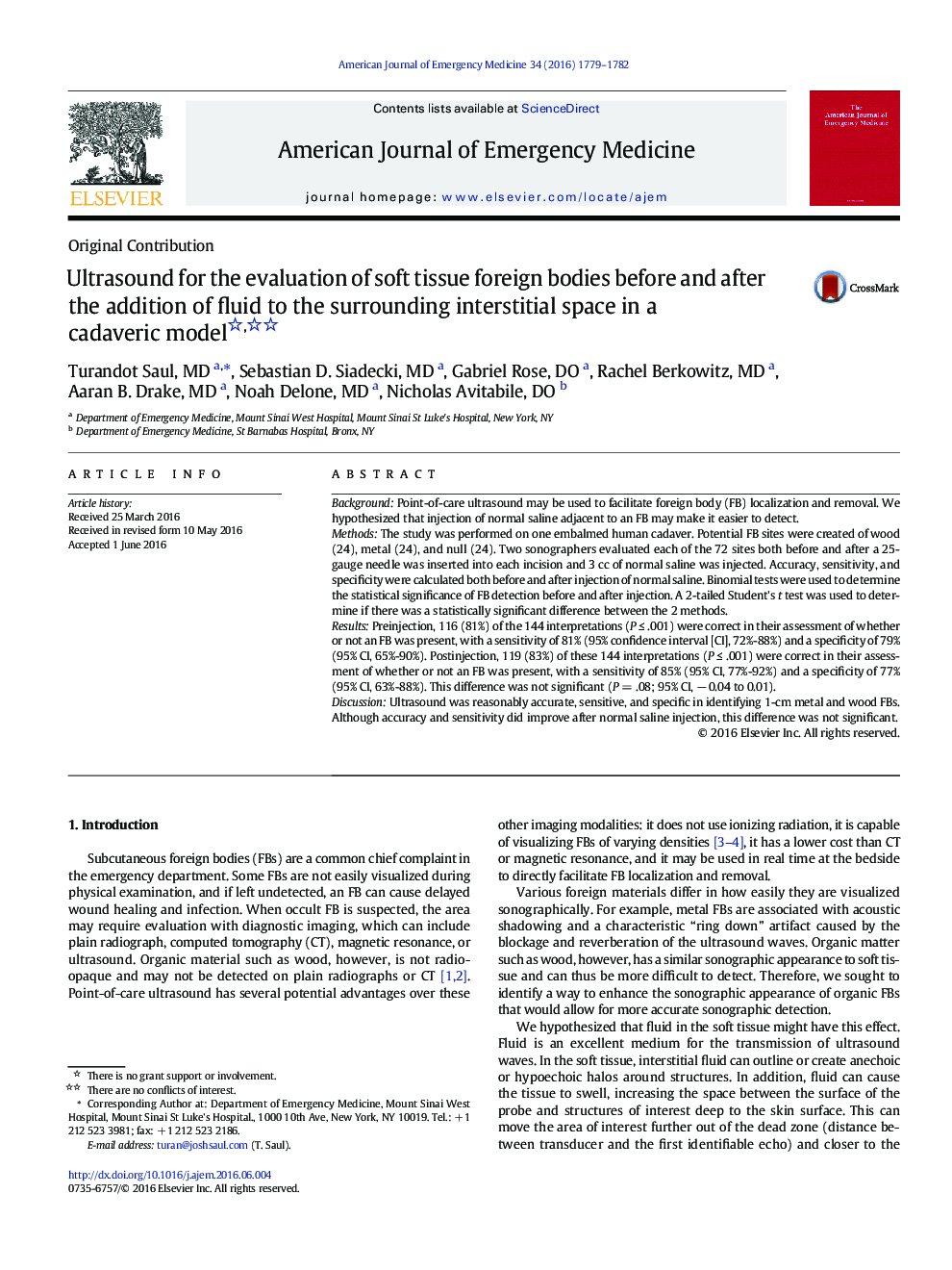| Article ID | Journal | Published Year | Pages | File Type |
|---|---|---|---|---|
| 3223023 | The American Journal of Emergency Medicine | 2016 | 4 Pages |
BackgroundPoint-of-care ultrasound may be used to facilitate foreign body (FB) localization and removal. We hypothesized that injection of normal saline adjacent to an FB may make it easier to detect.MethodsThe study was performed on one embalmed human cadaver. Potential FB sites were created of wood (24), metal (24), and null (24). Two sonographers evaluated each of the 72 sites both before and after a 25-gauge needle was inserted into each incision and 3 cc of normal saline was injected. Accuracy, sensitivity, and specificity were calculated both before and after injection of normal saline. Binomial tests were used to determine the statistical significance of FB detection before and after injection. A 2-tailed Student's t test was used to determine if there was a statistically significant difference between the 2 methods.ResultsPreinjection, 116 (81%) of the 144 interpretations (P ≤ .001) were correct in their assessment of whether or not an FB was present, with a sensitivity of 81% (95% confidence interval [CI], 72%-88%) and a specificity of 79% (95% CI, 65%-90%). Postinjection, 119 (83%) of these 144 interpretations (P ≤ .001) were correct in their assessment of whether or not an FB was present, with a sensitivity of 85% (95% CI, 77%-92%) and a specificity of 77% (95% CI, 63%-88%). This difference was not significant (P = .08; 95% CI, − 0.04 to 0.01).DiscussionUltrasound was reasonably accurate, sensitive, and specific in identifying 1-cm metal and wood FBs. Although accuracy and sensitivity did improve after normal saline injection, this difference was not significant.
